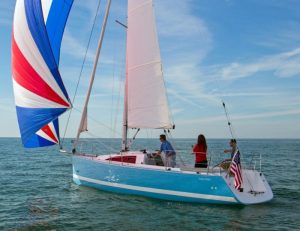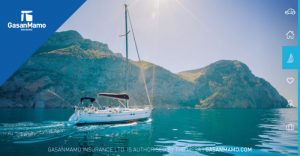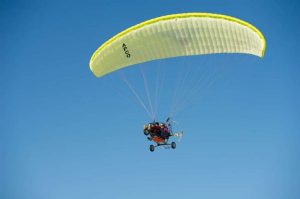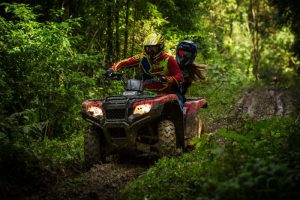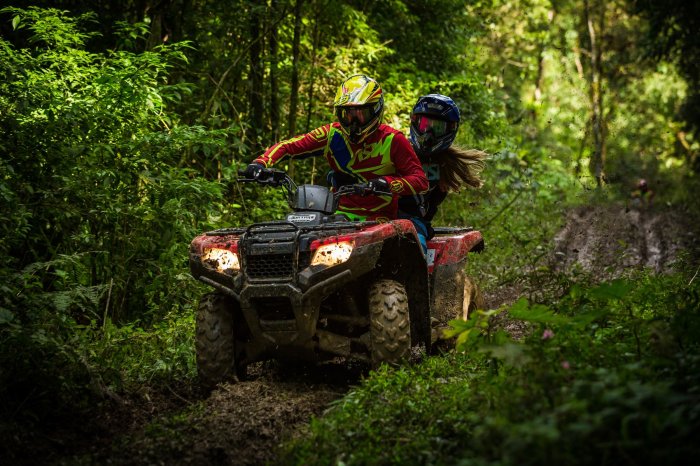
Gear up for the adrenaline-pumping world of extreme sports with our guide to the essential equipment needed for travelers seeking thrilling experiences. From biking through rugged terrains to scaling challenging rock faces, we’ve got you covered with tips and recommendations to make your next adventure unforgettable.
Embark on a journey where gear meets excitement and explore the world of extreme sports through the lens of a well-prepared traveler.
Cycling & Bikepacking Travel
Cycling and bikepacking are exhilarating ways to explore new destinations, whether it’s on paved roads or off-the-beaten-path trails. To ensure a successful bikepacking trip, it’s essential to have the right gear and pack efficiently. Let’s delve into the gear requirements and packing tips for both road cycling and off-road bikepacking adventures.
Essential Gear for Bikepacking
- High-quality bike: Choose a sturdy, reliable bike that can handle rough terrain for off-road bikepacking or a lightweight, efficient road bike for cycling on paved roads.
- Bikepacking bags: Invest in saddlebags, frame bags, handlebar bags, and a backpack to carry your essentials like clothing, food, and camping gear.
- Tent or bivvy bag: Depending on your preference, pack a lightweight tent or a bivvy bag for overnight stays during bikepacking trips.
- Sleeping bag and sleeping pad: Ensure you have a compact and lightweight sleeping bag and pad for a comfortable night’s sleep while bikepacking.
- Repair kit: Pack essential tools like a multi-tool, tire levers, spare tubes, and a mini pump to handle any bike repairs on the go.
- Clothing: Bring versatile, moisture-wicking clothing suitable for various weather conditions, including a waterproof jacket and extra layers for colder nights.
- Food and water: Carry a hydration pack or water bottles, along with energy bars, nuts, and other lightweight snacks to keep you fueled during long rides.
Road Cycling vs. Off-Road Bikepacking Gear
- Road Cycling: Requires a sleek, aerodynamic bike, lightweight gear, and minimalistic packing to prioritize speed and efficiency.
- Off-Road Bikepacking: Involves a durable mountain bike, rugged bikepacking bags, camping gear, and ample storage space for longer, adventurous journeys.
Tips for Efficient Packing
- Organize gear by weight: Distribute heavy items evenly to maintain balance and stability while riding.
- Use compression sacks: Pack clothing and sleeping gear in compression sacks to save space and keep items dry.
- Minimize unnecessary items: Only pack essentials to reduce weight and avoid overloading your bike with items you might not use.
- Practice packing: Test different packing configurations before your trip to ensure everything fits securely and access items easily when needed.
- Stay organized: Keep frequently used items like snacks, tools, and maps within easy reach for quick access on the road.
Road Trips & Van Life Travel
Road trips and van life travel offer a sense of freedom and adventure like no other. Whether you’re hitting the road for a weekend getaway or embarking on a long-term journey in a van, having the right gear is essential to make the most of your experience.
Must-Have Gear for Living on the Road in a Van
Living in a van requires careful consideration of the essentials you’ll need to stay comfortable and safe on the road. Some must-have gear includes:
- Portable stove for cooking meals
- Sleeping bag or camping mattress for a good night’s rest
- Portable toilet for emergencies
- Solar panels or power banks for charging devices
- Collapsible water containers for easy storage
Differences in Gear Necessities for Short Road Trips vs. Long-Term Van Life
Short road trips may require less gear compared to long-term van life. For short trips, essentials like a cooler for food storage, basic tools for emergencies, and a reliable GPS are key. On the other hand, long-term van life requires additional gear such as a portable shower, camping chairs for outdoor relaxation, and organization systems for keeping things tidy in a compact space.
Insights on Space-Saving Techniques for Packing Gear in a Van
Packing efficiently is crucial when living in a van to maximize space and stay organized. Some space-saving techniques include:
- Use storage bins or organizers to keep gear neatly arranged
- Utilize overhead storage or under-bed compartments for extra space
- Invest in collapsible or multi-functional gear to save space
- Roll clothes instead of folding to save on storage space
- Minimize duplicate items and prioritize essentials to avoid clutter
Rock Climbing Travel

Rock climbing travel offers a thrilling adventure for outdoor enthusiasts seeking a challenge in breathtaking natural settings. Whether scaling rugged cliffs or ascending towering rock faces, this high-intensity sport requires specialized gear and a strong focus on safety.
Specialized Gear for Rock Climbing Expeditions
- Rock Climbing Shoes: Provide grip and support on various types of rock surfaces.
- Climbing Harness: Essential for safety, attaching the climber to ropes for protection.
- Climbing Rope: Used for belaying and securing climbers during ascents and descents.
- Climbing Helmet: Protects the head from falling debris and impacts.
- Carabiners and Quickdraws: Connect ropes and climbing protection devices.
- Chalk Bag: Helps keep hands dry for a better grip on holds.
Importance of Safety Equipment in Rock Climbing
Safety equipment in rock climbing is crucial for preventing accidents and minimizing risks. Properly maintained gear and adherence to safety protocols can save lives in challenging climbing situations.
Checklist for Beginners Starting Rock Climbing While Traveling
- Research Climbing Areas: Identify beginner-friendly routes and suitable locations for practice.
- Take a Beginner Class: Learn essential techniques, safety practices, and equipment handling from experienced instructors.
- Start with Top-Roping: Begin with easier climbs where the rope is already anchored at the top for added safety.
- Use Proper Footwork: Focus on placing your feet securely on holds to maintain balance and conserve energy.
- Communicate with Partners: Establish clear signals and communication to ensure a safe and enjoyable climbing experience.
Extreme Sports Travel
When it comes to extreme sports travel, having the right gear can make all the difference in your experience. The versatility of gear needed for various extreme sports activities is crucial to ensure safety and comfort while pushing your limits.From snowboarding in the mountains to surfing in the ocean, each extreme sport requires specific gear to enhance performance and protect against potential risks.
However, investing in multi-functional gear can be a game-changer for travelers looking to engage in different extreme sports during their adventures.
Versatile Gear Recommendations
- Multi-sport helmets: Opt for helmets that are suitable for various activities such as skiing, snowboarding, and mountain biking to save space and weight in your luggage.
- Convertible backpacks: Look for backpacks that can transition from a hydration pack for cycling to a daypack for hiking, offering versatility for different sports.
- All-terrain shoes: Invest in durable and versatile shoes that can withstand various terrains, whether you’re climbing rocks or hiking through rugged landscapes.
- Waterproof outerwear: Choose outerwear that is waterproof and breathable to keep you dry and comfortable in changing weather conditions during extreme sports travel.
Adapting Gear for Different Climates and Terrains
- Layering system: Utilize a layering system with moisture-wicking base layers, insulating mid-layers, and weatherproof outer layers to adapt to different climates and temperatures.
- Climbing equipment: Adjust your climbing gear based on the type of rock formations and weather conditions you may encounter, ensuring you have the right tools for the job.
- Snow gear: Pack insulated clothing, waterproof gloves, and goggles for snow sports, and consider renting bulky equipment like skis and snowboards at your destination to save space.
- Water sports gear: Bring quick-drying and sun-protective clothing for water sports, along with essential safety gear like life jackets and helmets for added protection.
Sailing & Boating Travel

When embarking on sailing and boating adventures, having the right gear is crucial to ensure a safe and enjoyable experience on the water. From navigation tools to safety equipment, being prepared is key to a successful trip.
Essential Gear for Sailing Adventures
- Sails and rigging: Essential for harnessing the power of the wind and propelling the boat forward.
- Life jackets: Every person on board should have a properly fitting life jacket to ensure safety in case of emergencies.
- Navigation tools: Include items such as a compass, GPS, and nautical charts to help navigate the waters effectively.
- Anchors and lines: Important for securing the boat in place when needed, especially during stops or emergencies.
Safety Gear Requirements for Boating Trips
- First aid kit: A well-stocked first aid kit is essential to handle any injuries or medical emergencies that may arise.
- Fire extinguisher: To prevent and quickly extinguish any fires that may occur on board.
- Emergency signaling devices: Include items like flares, whistles, and signal mirrors to attract attention if needed.
- Personal locator beacon (PLB): A PLB can be a lifesaver in case of man overboard or other emergencies, sending out a distress signal with your location.
Impact of Weather Conditions on Gear Choice
Weather conditions play a significant role in determining the gear needed for sailing and boating travel. For example, in rough seas or high winds, having sturdy sails and rigging becomes even more crucial for stability and control. Similarly, in foggy conditions, navigation tools like GPS and radar are essential for safe passage through reduced visibility.
Final Conclusion
As we wrap up our exploration of extreme sports gear for travelers, remember to pack smart, stay safe, and push your boundaries in the pursuit of unforgettable experiences. With the right gear in tow, the world is your playground for extreme adventures.
FAQ Compilation
What type of gear is essential for extreme sports travel?
Essential gear includes helmets, harnesses, protective padding, specialized footwear, and safety equipment tailored to the specific activity.
How can I choose multi-functional gear for different extreme sports activities?
Look for versatile gear that can adapt to various sports, such as convertible backpacks, all-terrain shoes, and modular protective gear.
What impact do weather conditions have on gear choice for sailing and boating travel?
Weather conditions can affect the type of clothing, navigation tools, and safety gear needed, with additional precautions for rough waters or extreme temperatures.
